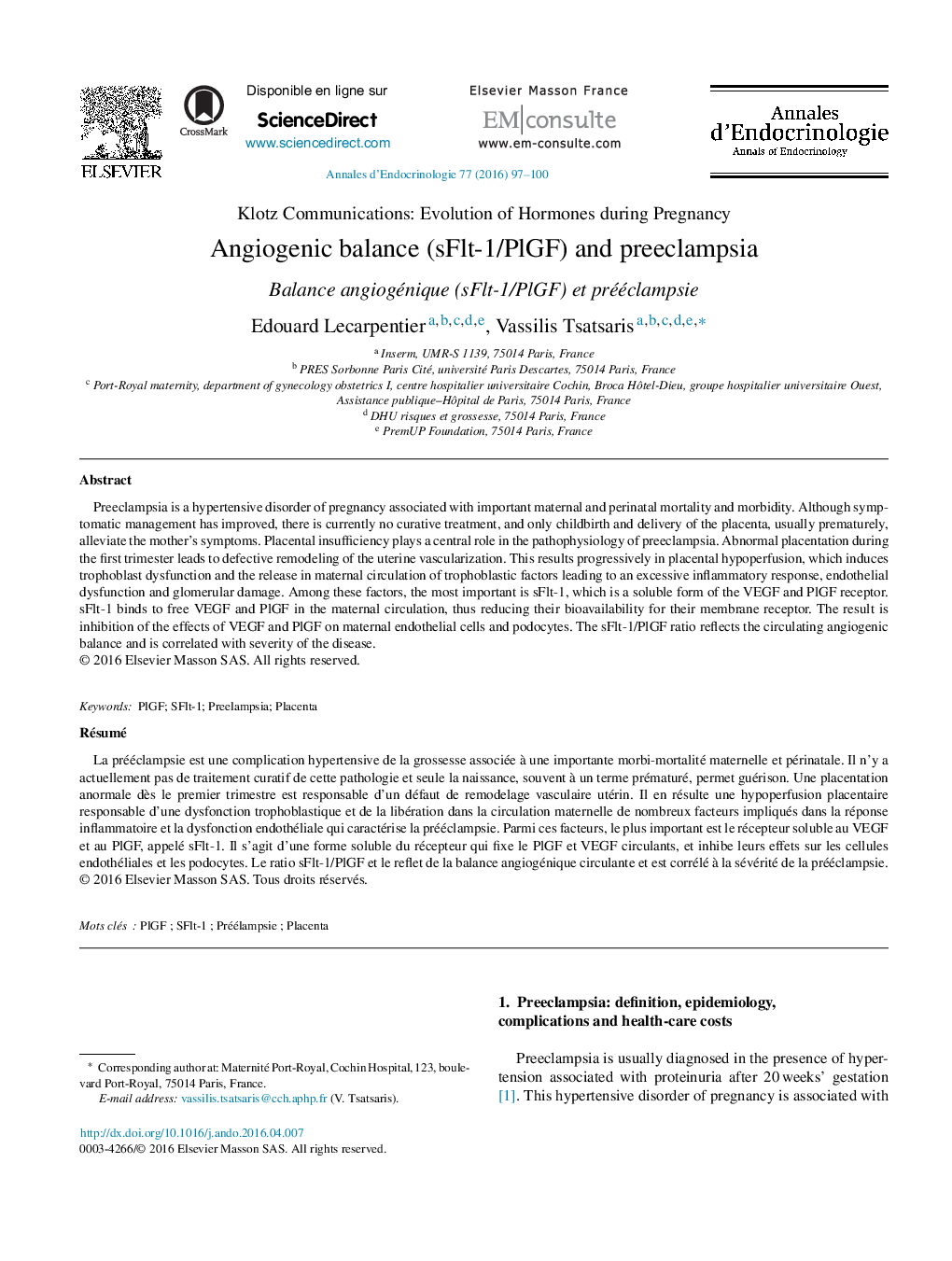| کد مقاله | کد نشریه | سال انتشار | مقاله انگلیسی | نسخه تمام متن |
|---|---|---|---|---|
| 3252129 | 1207048 | 2016 | 4 صفحه PDF | دانلود رایگان |
Preeclampsia is a hypertensive disorder of pregnancy associated with important maternal and perinatal mortality and morbidity. Although symptomatic management has improved, there is currently no curative treatment, and only childbirth and delivery of the placenta, usually prematurely, alleviate the mother's symptoms. Placental insufficiency plays a central role in the pathophysiology of preeclampsia. Abnormal placentation during the first trimester leads to defective remodeling of the uterine vascularization. This results progressively in placental hypoperfusion, which induces trophoblast dysfunction and the release in maternal circulation of trophoblastic factors leading to an excessive inflammatory response, endothelial dysfunction and glomerular damage. Among these factors, the most important is sFlt-1, which is a soluble form of the VEGF and PlGF receptor. sFlt-1 binds to free VEGF and PlGF in the maternal circulation, thus reducing their bioavailability for their membrane receptor. The result is inhibition of the effects of VEGF and PlGF on maternal endothelial cells and podocytes. The sFlt-1/PlGF ratio reflects the circulating angiogenic balance and is correlated with severity of the disease.
RésuméLa prééclampsie est une complication hypertensive de la grossesse associée à une importante morbi-mortalité maternelle et périnatale. Il n’y a actuellement pas de traitement curatif de cette pathologie et seule la naissance, souvent à un terme prématuré, permet guérison. Une placentation anormale dès le premier trimestre est responsable d’un défaut de remodelage vasculaire utérin. Il en résulte une hypoperfusion placentaire responsable d’une dysfonction trophoblastique et de la libération dans la circulation maternelle de nombreux facteurs impliqués dans la réponse inflammatoire et la dysfonction endothéliale qui caractérise la prééclampsie. Parmi ces facteurs, le plus important est le récepteur soluble au VEGF et au PlGF, appelé sFlt-1. Il s’agit d’une forme soluble du récepteur qui fixe le PlGF et VEGF circulants, et inhibe leurs effets sur les cellules endothéliales et les podocytes. Le ratio sFlt-1/PlGF et le reflet de la balance angiogénique circulante et est corrélé à la sévérité de la prééclampsie.
Journal: Annales d'Endocrinologie - Volume 77, Issue 2, June 2016, Pages 97–100
